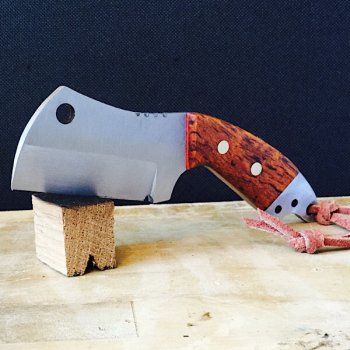Oh okay. Gotcha. Sorry for misunderstanding you on that.
Are you saying that line looks wavy, or that it’s fairly non-distinct? It won’t be as distinct for the same reason that the plunge lines won’t be as dramatic. With thin stock the angle just isn’t as dramatic. A good trick is to create some contrast with your hand sanding. Let’s say you go to 600 for a satin finish. Make a few single-direction pulls along the flats with 320. That will make the flats and the bevels catch the light a little differently and will accent the bevel line. It’s subtle but it works.
Another thing is to avoid washing out the grind line. If you want a bold transition line make sure not to use a pad under your sandpaper or else it will soften that corner when you hand sand.

